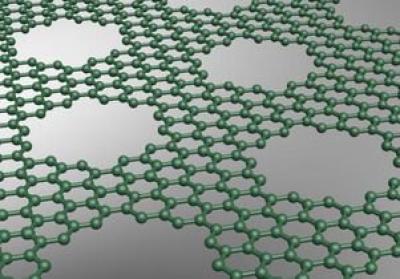Scientists from UCLA’s California NanoSystems Institute have designed an effective way to use graphene in order to place molecules specific patterns within tiny nanoelectronic devices, which could be useful in creating sensors that are even small enough to record brain signals.

This is done by using a sheet of graphene with minuscule holes in it that is then placed on a gold substrate. The holes allow molecules to attach to the gold exactly where the scientists want them, creating patterns that control the physical shape and electronic properties of devices that are 10,000 times smaller than the width of a human hair.
The researchers explain that this is a mask used to place molecules only in specific places on a stencil on the underlying gold substrate. The exact placement of molecules enables to determine exact patterning, which is key to the goal of building nanoelectronic devices like biosensors. With this advance, making nanoelectronic and nanobioelectronic devices could be much more efficient than current methods of molecular patterning, which use a technique called nanolithography.